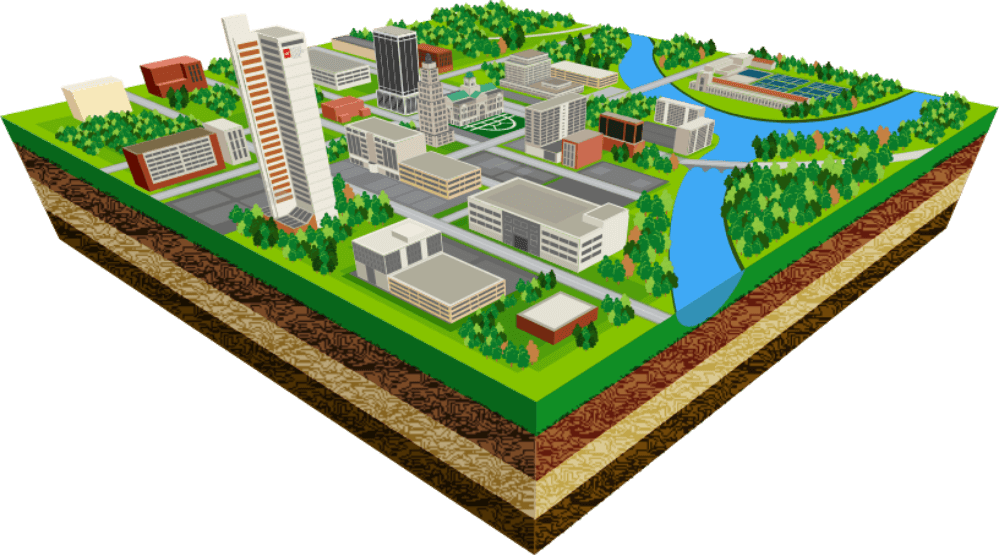Annual Drinking Water Quality Report
Each year City Utilities publishes an annual water quality report with information about where our water comes from, how it is treated, and its quality and safety.
Water Quality Report for Three Rivers Filtration Plant for 2022 – published June 2023 | Spanish Version | Burmese Version
Water Quality Report for Three Rivers Filtration Plant for 2021 – published June 2022
Water Quality Report for Three Rivers Filtration Plant for 2020 – published June 2021
Water Quality Report for Three Rivers Filtration Plant for 2019 – published June 2020
Water Quality Report for Three Rivers Filtration Plant for 2018 – published June 2019
Water Quality Report for Three Rivers Filtration Plant for 2017 – published June 2018
Water Quality Report for Three Rivers Filtration Plant for 2016 – published June 2017
Water Quality Report for Three Rivers Filtration Plant for 2015 – published June 2016
Water Quality Report for Three Rivers Filtration Plant for 2014 – published June 2015
Water Quality Report for Three Rivers Filtration Plant for 2013 – published June 2014
Water Quality Report for Three Rivers Filtration Plant for 2012 – published June 2013
Water Quality Report for Three Rivers Filtration Plant for 2011 – published June 2012
River Water Quality
Combined Sewer Overflows (CSOs) and other sources may contribute to high bacteria levels and river water quality degradation. Water quality is considered to be degraded if levels of bacteria are greater than the standard set by the Indiana Department of Environmental Management (IDEM) for fishing and swimming. The water quality standard set by IDEM for e. coli bacteria is 235 organisms per 100 mls of water.
Weekly River Water Quality Report
Water quality testing is performed weekly between April 1 and October 31 of each year.
Testing of samples as of April 22, 2024
228 organisms/100 ml at the Ferguson Bridge on the St. Marys
173 organisms/100 ml at the Mayhew Bridge on the St. Joseph
161 organisms/100 ml at the Tennessee Bridge on the St. Joseph
150 organisms/100 ml at the Anthony Bridge on the Maumee
138 organisms/100 ml at the Landin Bridge on the Maumee
214 organisms/100 ml at the Spy Run Bridge on the St. Marys

WHAT AFFECTS FORT WAYNE’S
DRINKING WATER?
Each of Fort Wayne’s rivers receives water from its own unique watershed. A watershed is an area of land from which rain water or snow melt drains to the same location, such as a stream at the bottom of a hillside. Whatever the water runoff picks up as it flows over land and across hard surfaces in the watershed is carried to the rivers.
General River Water Quality Measurements and Conditions
A variety of scientific parameters (chemical and physical measurements) make up river water quality. Bacteria, as noted above, are of particular concern to human health so this parameter is routinely measured and reported here. Other parameters are also routinely measured to help quantify overall river health. More information about these measurements, common values, and overall river conditions are explained on our Watershed Protection page.
Drinking Water Treatment
Fort Wayne City Utilities’ primary commitment is to the health and safety of our customers. We take pride in always providing drinking water that meets or is better than all state and federal safety and quality regulations requirements.
We value your trust and we are committed to providing safe water that you and your family can rely on.
City Utilities uses the following chemicals to clean and treat our drinking water.
- Ferric sulfate and polymer — these chemicals cause soil particles and other dissolved and suspended particles to stick together forming sticky clumps that settle out, taking physical contaminants with them. These chemicals are added then completely removed during the treatment process.
- Calcium hydroxide — also known as “lime”, this softens the water by causing naturally occurring calcium and magnesium to be removed.
- Powdered Activated Carbon — similar to charcoal, this is added to the process then removed, taking taste and odor with it.
- Chlorine – this includes free chlorine and chlorine dioxide used to kill bacteria. It is measured in parts per million (PPM). The Environmental Protection Agency’s upper limit for chlorine is 4 ppm. Water leaving the filtration plant must contain at least 0.5 ppm to stop bacteria from developing in the water main system.
Testing for Drinking Water Safety
City Utilities tests drinking water for safety and quality throughout the water treatment process. Continuous monitoring of the water that comes from the St. Joseph River helps operators at the plant adjust the treatment process to the most effective level based on incoming water conditions.
Chemists at the plant test the water that goes out to customers for more than 120 substances. City Utilities also collects water samples from homes and businesses around the community to make sure the water arriving at the customers’ taps remains safe.
Each year City Utilities publishes an annual water quality report showing the levels of substances commonly found in drinking water supplies.
A Guided Walk Through the Water Treatment and Testing Process
Water Distribution and Storage
Once the water is treated at the Three Rivers Water Filtration Plant, it is held in a 20 million gallon underground storage reservoir just outside the plant until it is pumped out into the distribution system. Water is distributed to 5 elevated storage tanks around the City where it is stored until needed. The tanks also help maintain water pressure in the outskirts of the distribution system. Water travels through more than 1,160 miles of water mains to the 250,000 customers served by the Fort Wayne water utility.
Fort Wayne City Utilities operates several reservoirs that help to ensure an adequate supply of water for the City. Water can be impounded in the Cedarville Reservoir at Leo-Cedarville at the St. Joe River Dam near Johnny Appleseed Park. City Utilities also has a man-made reservoir near Grabill called the Hurshtown Reservoir.





